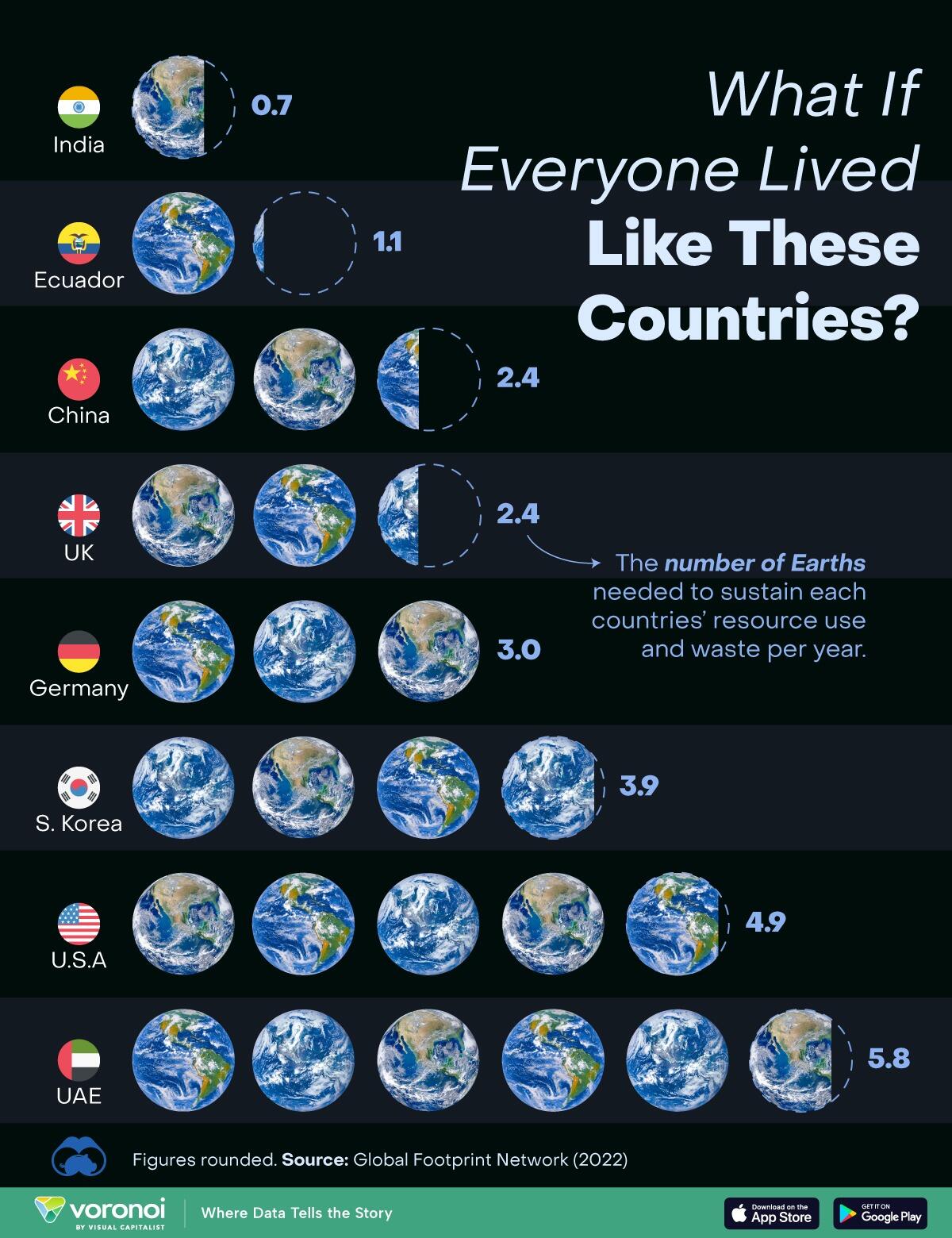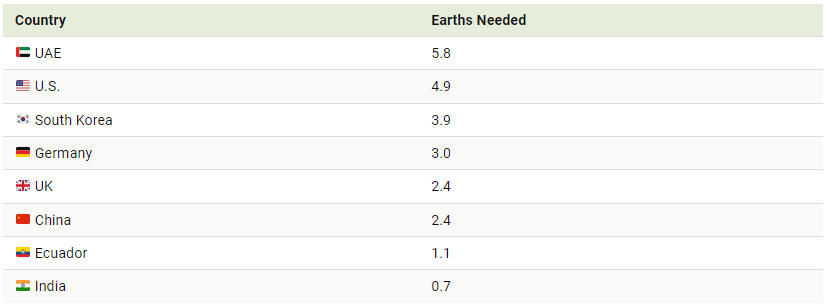The Number Of 'Earths' Needed For Different Countries' Lifestyles
How many Earths would we need if the entire global population lived like one country?
In this graphic, Visual Capitalist's Marcus Lu visualized data from the Global Footprint Network to see the number Earths required to sustain a world population that lived like Americans, Germans, and more.
Data and Methodology
The data we used to create this graphic is listed in the table below. Figures were published in 2022 (with data as of 2018).
These estimates are based on each country’s ecological footprint, which is measured in global hectares (gha).
It represents the amount of biologically productive land and water a population requires to produce all of the resources it consumes and to absorb the waste it generates, using prevailing technologies.
Key Takeaways From This Data
The data shown in this graphic sheds light on how different countries impact the planet.
Countries that exceed their respective biocapacity are known as biocapacity debtors. This means that the country is net-importing biocapacity through trade, liquidating national ecological assets or emitting more carbon dioxide waste into the atmosphere than its own ecosystems absorb.
Countries that have an ecological surplus, on the other hand, are known as biocapacity creditors. If everyone on the planet lived like these countries, we would need fewer Earths rather than more Earths.
Earth Overshoot Day
Another interesting concept is Earth Overshoot Day, which marks when humanity’s demand for ecological resources in a given year exceeds what the planet can regenerate in that year. For 2024, overshoot day fell on Aug. 1.
If you enjoyed this post, check out The Countries With No Earth Overshoot Day, from featured creator Statista.
NEVER MISS THE NEWS THAT MATTERS MOST
ZEROHEDGE DIRECTLY TO YOUR INBOX
Receive a daily recap featuring a curated list of must-read stories.




